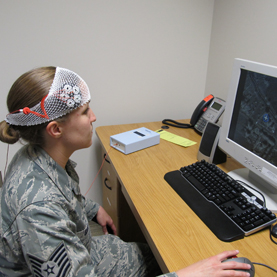Marom Bikson is CEO of Soterix Medical and Associate Professor at City College of New York in the Department of Biomedical Engineering. Marom is a distinguished tDCS scientist and prominent in the development of HD-tDCS. Download the interview here (zipped mp3). (Firefox users- there is an audio player here, but it’s displaying intermittently. Trying to track down the issue. In the meantime you can download the episode or open the page in another browser).
(We got a good forty minutes of interview in before the Skype gremlins caught up with us. I had to cobble an ending together.)
Show Notes:
Post-Doc, Neurophysiology Unit, University of Birmingham Medical School, U.K., 2003
Ph.D., Biomedical Engineering, Case Western Reserve University Cleveland, OH, 2000
B.S., Biomedical Engineering (EE Concentration), Johns Hopkins University, Baltimore, MD, 1995
Introduction to Transcranial Direct Current Stimulation (tDCS) in Neuropsychiatric Research
5th International Conference on Non-invasive Brain Stimulation 2013
Instrumentation – making medical gizmos, process.
IRB- Institutional Review Board
IRB at the FDA
Small Business Technology Transfer STTR grant.
Soterix partners
Abhishek Datta CTO,
Lucas Parra
Bootstrapped at this point.
Difficulty in engineering medical devices is in designing for the anomalous cases- how that 1 in 999 times situation could go wrong.
Clinical trials. Depression, (Colleen Loo, Blackdog Institute), pain, stroke, epilepsy clinical trials ongoing.
Customizing technologies to match needs of particular clinical situations.
Soterix developed software designed for clinicians.
HDTargeting
HDExplore
Modeling current flow through the head.
Perhaps depression studies are closest to FDA qualification for tDCS?
(Prediction is very hard, especially about the future – Yogi Berra.)
A device (NorDoc Smartstim) that can go to 4mA is being used in a smoking cessation trial? (Trial info indicates 2mA current dose.)
FDA tDCS approval would be device-specific at first. But would open the door to ‘me too’ mechanism, FDA 510(k)
HD tDCS can have multiple cathodes and or multiple anodes. An array of 4 small anodes splitting 2mA, for example (.5 mA each electrode), can function as an anodal ‘virtual pad’. Assumes cathode somewhere else on the body).

Image By Richard McKinley USAF
Tolerability is how tolerable in terms of side effects a medication is.
Transcutaneous Spinal Direct Current Stimulation Example tsDCS paper.
A Theory of tDCS (“Gross oversimplification”) As positive current flows into the cortex it passes neurons.
Because of the nature of neurons, this positive current depolarizes somas (cell’s body), increasing excitability, thereby increasing the functionality & plasticity of that region (hypothesis… “We really don’t know.”). Under the cathode, somas (cells) are being hyper-polarized – excitabilty decreases.
A synapse is a structure that permits a neuron (or nerve cell) to pass an electrical or chemical signal to another cell.
Pyramidal neuron
Titration, also known as titrimetry, is a common laboratory method of quantitative chemical analysis that is used to determine the unknown concentration of an identified analyte.
TES Transcranial Electric Stimulation
“transcranial electrical stimulation” Merton and Morton 1980
“Priming the network in conjunction with applying tDCS makes a lot of sense, as a way to make the tDCS to do what you want.” (Co-priming – The idea that one would initiate an activity first, and THEN add tDCS.)
DARPA supported accelerated learning.
Memory consolidation.
Lisa Marshall
DIY tDCS community and building medical devices. Redundancy.
tDCS implies proven, vetted protocols, that have been used in clinical trials.
Thanks Marom!

